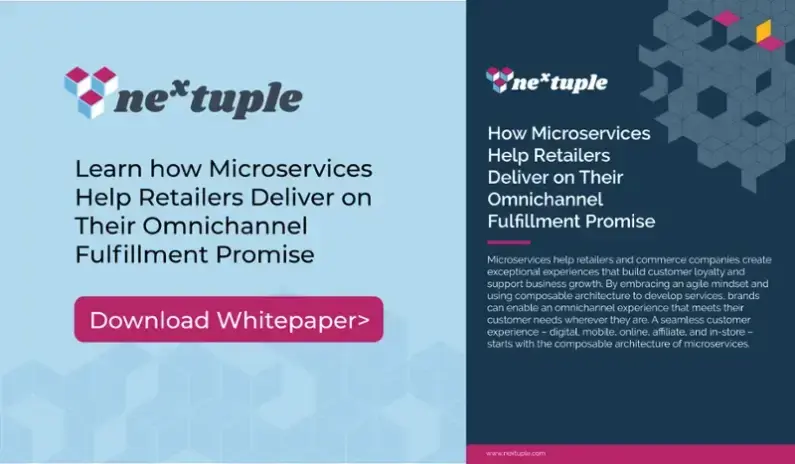In the omnichannel era, retailers must provide an environment allowing the shopper to customize their experience from start to finish. This approach can shatter traditional fulfillment rules and require a level of agility not found in legacy SaaS Order Management Systems.
Today’s consumers expect to shop on their own terms, and they want a menu of fulfillment options from which to choose. Retailers must deliver on customer preferences and convenience to deliver a truly personalized omnichannel fulfillment experience.
The Challenges with SaaS Systems
Truly personalized omnichannel fulfillment hinges on the synergy between front-end retail channels and back-end fulfillment systems. To accomplish and nurture this synergy, retailers are moving away from traditional monolith Order Management Systems to cloud-native microservices.
Retailers realize that fulfillment experiences are a critical differentiator, with consumers now expecting to be able to dictate their own fulfillment terms from an array of options. Omnichannel retailers must now consider same-day delivery, store pickup vs. shipping, locker pickup, returns pickup, and more. And they have to ensure that their tech stack doesn’t get in the way of delivering this flexibility.
Enter Microservices
Microservices provide a solution that delivers speed-to-market and total flexibility when compared to legacy choices of either implementing a SaaS OMS solution or a custom build. For example, an existing SaaS vendor’s roadmap may not be aligned with the retailer’s priorities in terms of omnichannel fulfillment. On the other hand, a custom build requires huge upfront investments and the recruitment of a highly skilled team in a challenging market.
Microservices are modular and composable “services” that are independently developed, deployed, and managed. Microservices can be combined to create functionality that allows retailers to quickly deliver new features to meet customer demands and create greater efficiencies for better profitability. By decoupling complicated application elements, microservices help retailers to react faster to market demands and scale as needed.
This approach is far more agile than monolithic SaaS Order Management Systems and allows the retailer total freedom to develop omnichannel fulfillment strategies and capabilities that make sense for them and their customers.
Additionally, applications delivered via microservices are much easier to scale, update and enhance without downtime, and specialized teams can develop multiple services concurrently, This allows for ongoing and seamless development, so retailers can react quickly to market trends and customer expectations.
Powering the Transformation
The transformation from SaaS systems and custom-built OMS to an agile cloud-native approach powered by microservices is driven by consumer expectations and the desire to react quickly to them. This change – which is rapidly upending the approaches of the last 10 years – requires a new way of thinking and approaching fulfillment.
Retailers that are committed to personalized omnichannel fulfillment approach the issue on an ongoing, rather than a project, basis. A structured approach that is constantly evaluating business value and technology modernization in tandem is critical to responding quickly and differentiating the customer experience.
Moving away from legacy SaaS systems requires retailers to have the supporting Dev-Ops capabilities to run these agile microservices platforms. Retailers will often find that a hybrid approach is in their best interest as they evaluate their business needs. In some cases, it may make sense to use an existing solution rather than building the capability.
For example, one retailer may decide that order promising is an area with significant complexity and performance needs that a pre-packaged solution can’t fully address. Another may decide an existing SaaS solution will do the job, so they can focus their development efforts on other areas where they need to build their own solution. The beauty of microservices is that they can align with your existing tech stack for maximum flexibility.
The Future is Bright
Omnichannel fulfillment is helping to keep the future of retail bright. We are seeing a continued shift toward leveraging local inventory to meet customer needs, and automation will be a big part of continuing to evolve these capabilities.
At the same time, sustainability continues to be an important driver for consumers and retailers. This will involve rethinking last-mile strategies – and will likely result in new methods and models that don’t even exist today. Microservices will be a key component of future-proofing systems and delivering the flexibility required to create and execute these new models. The ability to quickly stand up new applications using cloud-native apps will be critical for retailers as they navigate the ever-evolving demands of their omnichannel fulfillment strategies.
.png?width=250&height=56&name=nextuple_logo_vector%20(4).png)

